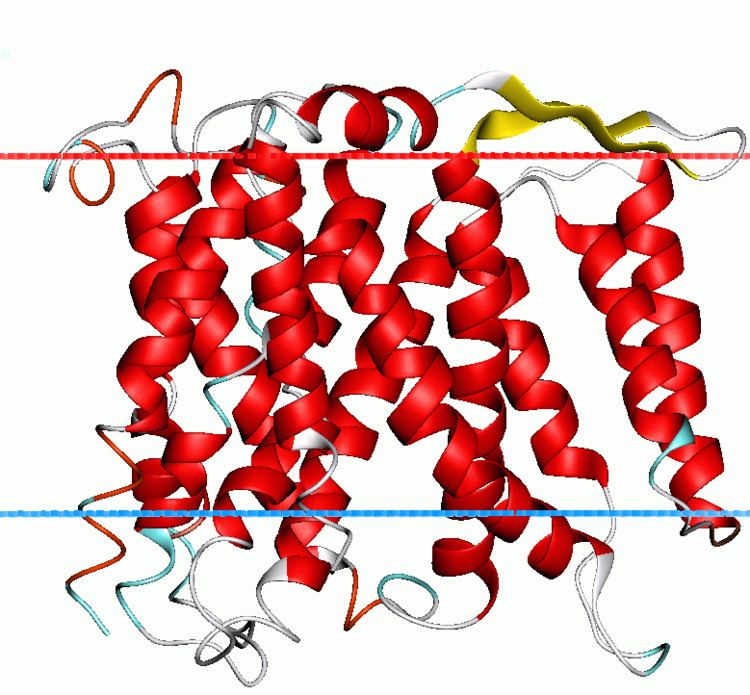Symbol Na_H_antiport_1 InterPro IPR004670 OPM superfamily 346 | Pfam PF06965 TCDB 2.A.36 OPM protein 1zcd | |
 | ||
Na+/H+ antiporter A (NhaA) family (TC# 2.A.33) contains a number of bacterial sodium-proton antiporter (SPAP) proteins. These are integral membrane proteins that catalyse the exchange of H+ for Na+ in a manner that is highly pH dependent. Homologues have been sequenced from a number of bacteria and archaea. Prokaryotes possess multiple paralogues. A representative list of the proteins that belong to the NhaA family can be found in the Transporter Classification Database.
Contents
Structure
Proteins of the NhaA family are of 300-700 amino acyl residues in length. NhaA of E. coli is a homeodimer, each subunit consisting of a bundle of 12 tilted transmembrane α-helices (TMSs).
Molecular dynamics simulations of NhaA enabled proposal of an atomically detailed model of antiporter function. Three conserved aspartate residues are key to this proposed mechanism: Asp164 (D164) is the Na+-binding site, D163 controls the alternating accessibility of this binding site to the cytoplasm or periplasm, and D133 is crucial for pH regulation.
Function
Na+-H+ antiporters are integral membrane proteins that exchange Na+ for H+ across the cytoplasmic membrane and many intracellular membranes. They are essential for Na+, pH, and volume homeostasis, which are processes crucial for cell viability. The E. coli protein probably functions in the regulation of the internal pH when the external pH is alkaline, and the protein effectively functions as a pH sensor. It also uses the H+ gradient to expel Na+ from the cell. Its activity is highly pH dependent.
The NhaA crystal structure has provided insight into the pH-regulated mechanism of antiporter action and revealed transmembrane segments, which are interrupted by extended mid-membrane chains that have since been found with variations in other ion-transport proteins. This novel structural fold creates a delicately balance electrostatic environment in the middle of the membrane, which might be essential for ion binding and translocation.
The generalized transport reaction catalyzed by NhaA is:
Na+ (in) + 2H+ (out) ⇌ Na+ (out) + 2H+ (in).
Crystal Structures
PDB: 1ZCD, 3FI1, 4ATV, 4AU5
